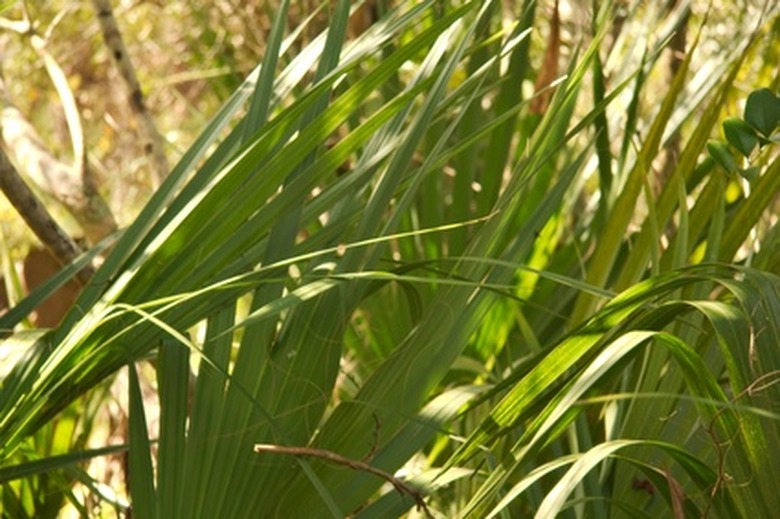Outdoor Care Of Majesty Palm Trees
The majesty palm (Ravenia rivularis) is often grown as a houseplant, which is unfortunate as it doesn't thrive in pots. This is a palm that is well-adapted to being planted in the landscape and should only be grown within its USDA hardiness zones (9b to 11). Planted in a sunny location, the majesty palm grows to a height of 20 feet, providing a striking accent in the landscape.
The majesty palm (Ravenia rivularis) is often grown as a houseplant, which is unfortunate as it doesn't thrive in pots. This is a palm that is well-adapted to being planted in the landscape and should only be grown within its USDA hardiness zones (9b to 11). Planted in a sunny location, the majesty palm grows to a height of 20 feet, providing a striking accent in the landscape.
Step 1
Form a ring out of soil and place it around the base of the tree. It should be 4 inches in height and 8 inches wide and placed 3 feet away from the tree. When you water the majesty palm, fill up the watering ring.
Step 2
Place a 3-inch layer of mulch inside the watering ring. Leave a space of 2 inches between the base of the tree and the mulch. Mulch helps the soil retain water, and it also discourages weed growth.
- The majesty palm (Ravenia rivularis) is often grown as a houseplant, which is unfortunate as it doesn't thrive in pots.
Step 3
Water the majesty palm daily for its first three weeks in the ground. After that, maintain a moist, not soggy, soil. Completely fill the watering ring when you water.
Step 4
Watch for signs of nitrogen deficiency, which is common in majesty palms. Symptoms include the leaves turning first light green, then yellow. In severe cases, iron chlorosis can turn the fronds white. Use 8-2-12 controlled release fertilizer, according to package directions, to control this disease.
- Water the majesty palm daily for its first three weeks in the ground.
- Use 8-2-12 controlled release fertilizer, according to package directions, to control this disease.
Grow Majesty Palm Trees Outdoors
The majesty palm (Ravenea rivularis) is native to Madagascar, and in the United States, most people grow it as a **houseplant. ** When it grows indoors, it tends to remain small, but if it is allowed to grow outdoors where its root system can expand, it reaches heights of 50 feet or more. Because it comes from the rain forest, the majesty palm also likes wet soil and high humidity. The majesty palm is a popular indoor plant because its generous fronds spread out and fill whatever space the plant occupies. It produces small, white flowers that develop into bright red, spherical fruits that are about 1/2 inch in diameter. It obviously loves water, and outside its habitat, it prefers **poorly draining soil with plenty of clay,** which makes it a good plant to grow in low-lying parts of the property. Fertilize majesty palms with regular house plant fertilizer twice a year in early spring and late summer. ** If the air dries out, it's better to keep the ground wet than it is to mist the leaves, which can rot and turn brown if exposed to excessive water, particularly if the water comes from the tap and not from the sky.
- The majesty palm (Ravenea rivularis) is native to Madagascar, and in the United States, most people grow it as a **houseplant.
- ** When it grows indoors, it tends to remain small, but if it is allowed to grow outdoors where its root system can expand, it reaches heights of 50 feet or more.
Things Needed
- Fertilizer
- Mulch
References
- ?"?Landscape Management:? ?Planting and Maintenance of Trees,? ?Shrubs and Turfgrass"; ?James R.? ?Feucht and Jack D.? ?Butler?; ?1988
- Houseplant 411: Majesty Palm
- Palmpedia: Ravenea rivularis
- GardenSMART: Grow Majesty Palms Like a Pro
